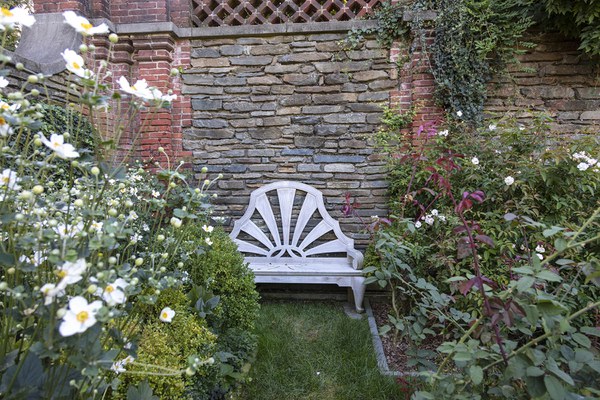By Jonathan Kavalier
In exploring the wonders of the Dumbarton Oaks Gardens—the formality as they fall away from the Main House, the “Trixie moments” of conceal and reveal so typical of Beatrix Farrand’s designs, the playful interplay between symmetry and asymmetry, and the masterful blending of seemingly disparate styles—I continue to be awestruck by the complexity of the overall composition. Farrand’s genius is exhibited on a broad scale by her seamless blending of styles and materials, her respect for the natural topography and flora, and her mastery of the arts and crafts aesthetic. It is equally noticeable at the intimate scale of the details throughout the gardens.
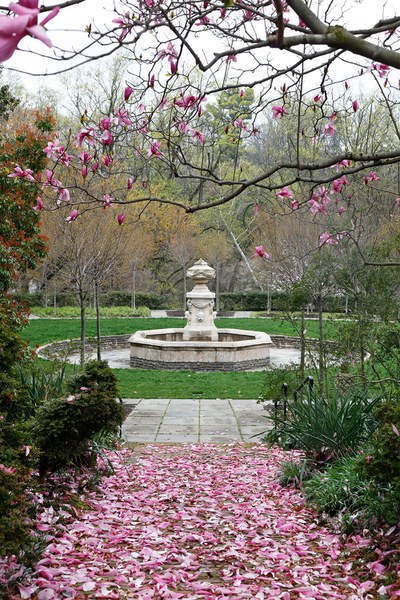
For me, the choreography—how Farrand intended users to move through the landscape—is a palpable example of her genius and intense study of the conditions at Dumbarton Oaks. When I walk through the gardens, these moments of intentional pacing, respite, privacy, and prospect are my favorite.
A single path—say, the Plum Walk—can provide such different opportunities, enticing the visitor toward Cherry Hill in April with a splash of pink through the steps at the end of the walk, or redirecting them up the branched path towards the Ellipse later in May with a dogwood display when the cherries no longer beckon. Hidden spots are plentiful, such as the secluded bench nestled among the forsythia midway down Fairview Hill—which is so hidden, in fact, that this particular bench is reputed to be where infamous spy Jonathan Pollard met with his Israeli handler.
Furniture plays a large part in Farrand’s conception of comfort and ease of movement through the gardens. Along with well-considered steps and landings, these pieces are important elements that enhance the spaces they reside in. Some of the furniture, largely marble and iron pieces, was purchased under Mildred Bliss’s direction, while the majority of the wooden pieces were designed by Farrand herself and, in a few later cases, by Ruth Havey. The wooden furniture collection represents a masterpiece of design in itself: Farrand designed over 45 pieces, featuring mixed materials and styles, that are largely specific to the portion of garden they are displayed in and perfectly fit the spaces they were conceived for. The curved lattice-backed bench nestled into the nook between the upper and lower sections of Mélisande’s Allée is a wonderful example, perfectly matching the curve of the retaining wall behind it. The four Mr. Yew seats tucked into the four corners at the base of the Herbaceous Border make it look like the space was designed around them. In each case, the furniture provides a focal point, a well-considered place to contemplate, and an element that elevates the composition of the whole room.
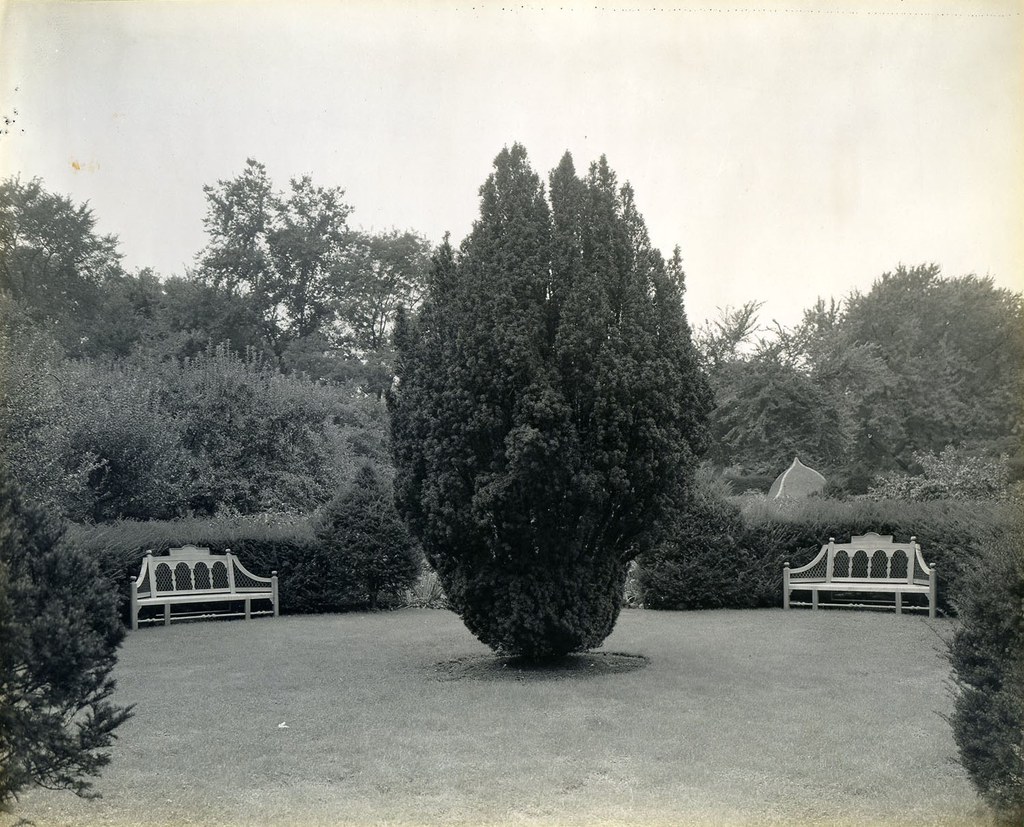
In some cases, furniture is used to refine scale, as with the two benches that flank the retaining wall separating the Rose Garden and Fountain Terrace. Farrand acknowledged the massive scale of the terrace retaining walls, noting in the Plant Book for Dumbarton Oaks that “the steepest slope, which lay midway between the orangery steps and the foot of the steps at the east of the Fountain Garden, explains the high walls on the west sides of both the Rose Garden and Fountain terraces.” She created an elegant solution: on the Rose Garden side, the iconic Quod severis metes bench sits, bearing the Bliss family motto—"as ye sow, so shall ye reap”—along with their family crest, the sheaf of wheat, which caps the bench as a finial along with oak leaves in lead relief. Descending into the Fountain Terrace, you realize the back of the Quod severis metes bench is built into the retaining wall. The Fountain Terrace side features a lead baldachin that covers a Farrand-designed teak and metal bench. The sheaf of wheat not only harmonizes perfectly with the lead baldachin, it also serves as a finial for both benches, elegantly and cleverly blurring the lines between the front and back of this design.
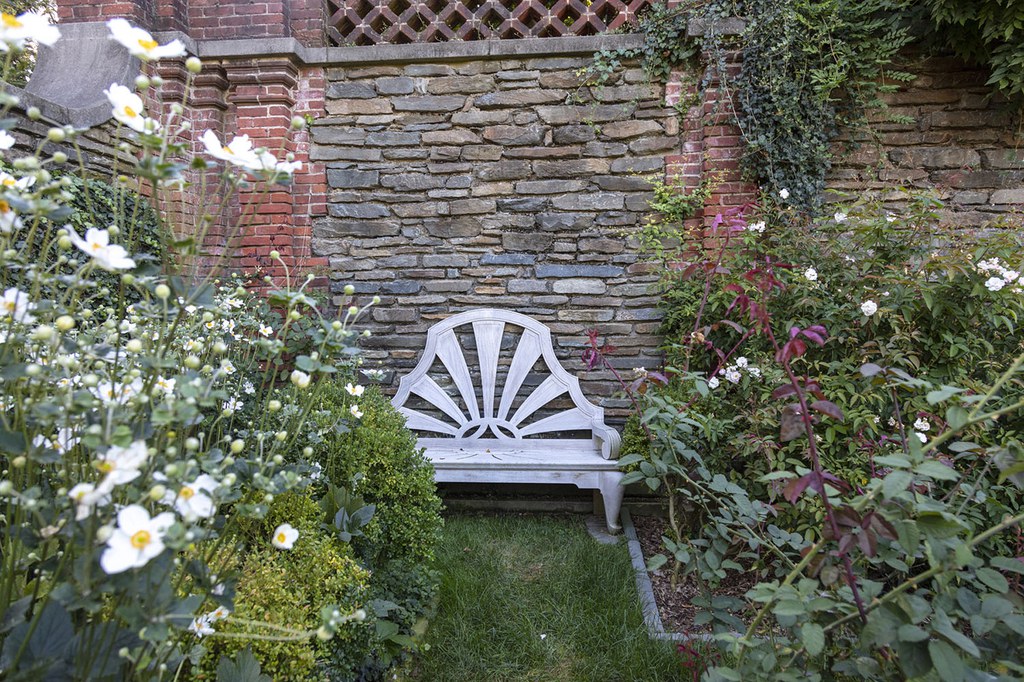
Being constructed of wood and thus more susceptible outdoors, furniture pieces have been repaired, reproduced, and even lost over the past century since Farrand began her work. Because the furniture is critical to the composition of the garden spaces it was designed for, we take great care of it to ensure it continues to illustrate Farrand’s design genius. Preservation efforts over the past decade have involved custom reproductions using a high-end furniture designer with a factory in Costa Rica that specializes in sustainably grown, FSC-certified teak. This work includes reproductions of the benches in the Swimming Pool, Urn Terrace, and the Rose Garden. The originals were painstakingly disassembled in order to properly measure and plan for reproduction. The prospect of sending one-of-a-kind Farrand originals abroad, however, is less than ideal. Added to that concern are the complexities of insuring a piece of furniture that falls somewhere between priceless and worthless—unique pieces but often in dire condition.
To that end, we began a project to create three-dimensional computer models of all the Farrand- and Havey-designed furniture (to better facilitate its eventual reproduction) in 2018. We used original Farrand reference drawings and contemporary field measurements to ensure the most accurate modeling of the realized pieces, because Farrand’s iterative design process resulted in cases where her original drawings differ from what was actually constructed.
The three-dimensional models have not only allowed us to continue reproductions without sending original collection items abroad but have also facilitated improvements to joinery and other structural elements that allow for modern construction methods without altering the historic character of the pieces.
The newly constructed steps from the Plum Walk down to the Vegetable Garden offer an example of altering designs to improve outcomes; Farrand designed this staircase out of mahogany, with its wonderfully angular arts and crafts balusters and railing. The staircase needed reconstruction due to decay of the supporting posts that had originally been embedded into the concrete footers, allowing moisture to infiltrate the wood through the end-grain. The new steps were rebuilt to Farrand’s design, but we substituted more sustainable ipe wood for the mahogany on the treads and stringers, and kept mahogany for the balusters and railings. We also used modern decking brackets to attach the supports to the concrete footers, eliminating conditions that could encourage decay.
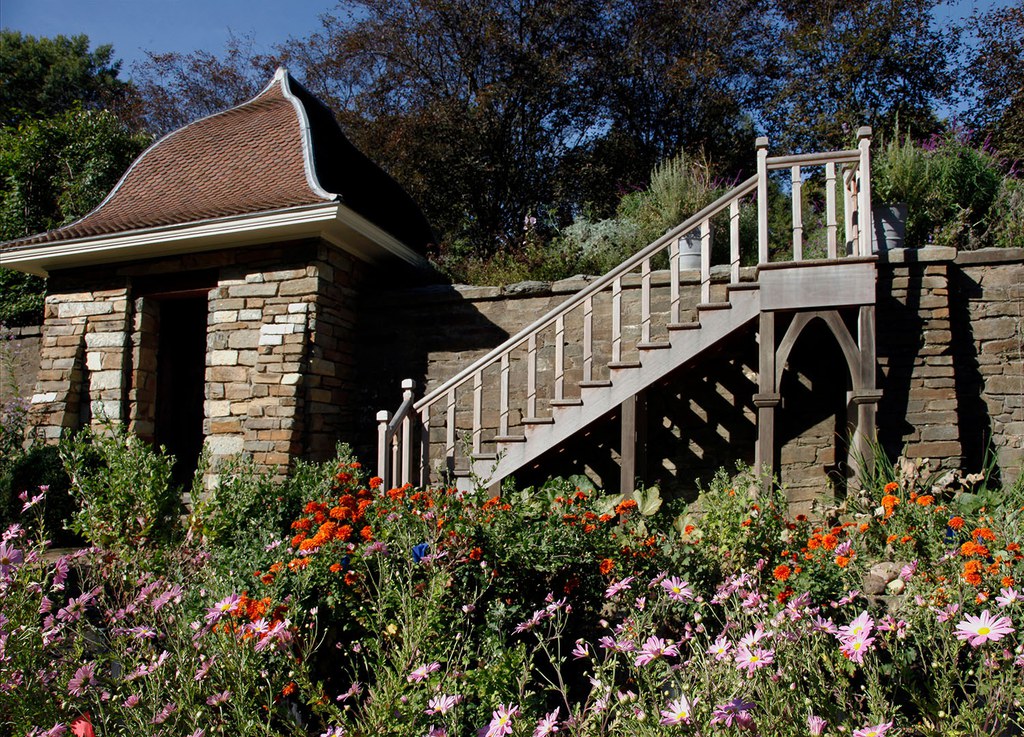
We are about to embark on a two-year project to reproduce all the remaining Farrand and Havey wooden furniture. This will allow us to complete the furniture reproduction project and begin focusing on the fixed wooden pieces in the gardens, such as arbors and trellises. Similar three-dimensional models for arbors and the Perspective Gate, in the lower gardens below Camellia Circle, are currently being produced for this upcoming project. On a broader scale, as we celebrate the gardens’ centennial this year, we look ahead to long-term projects that will ensure the preservation of these gardens for another century and beyond.
Jonathan Kavalier is director of gardens and grounds.

